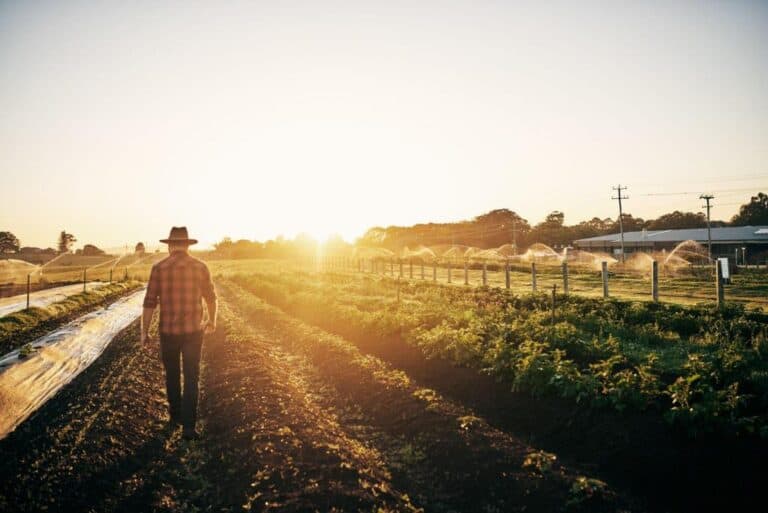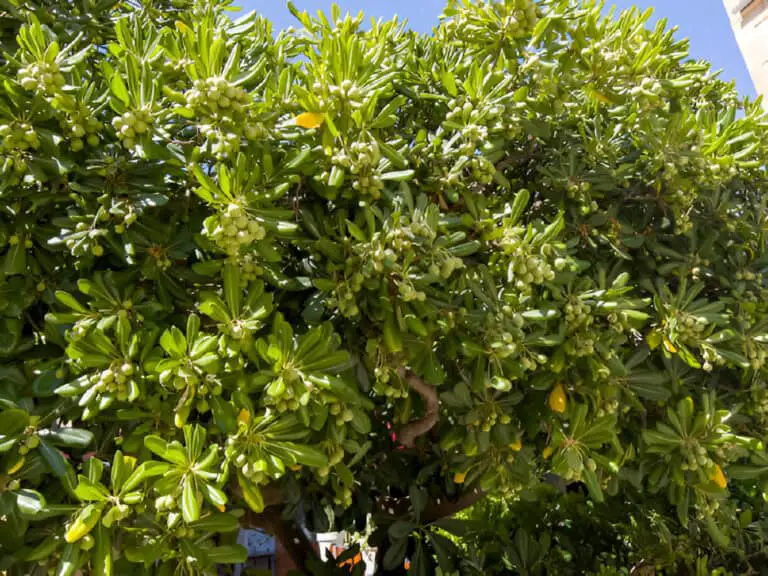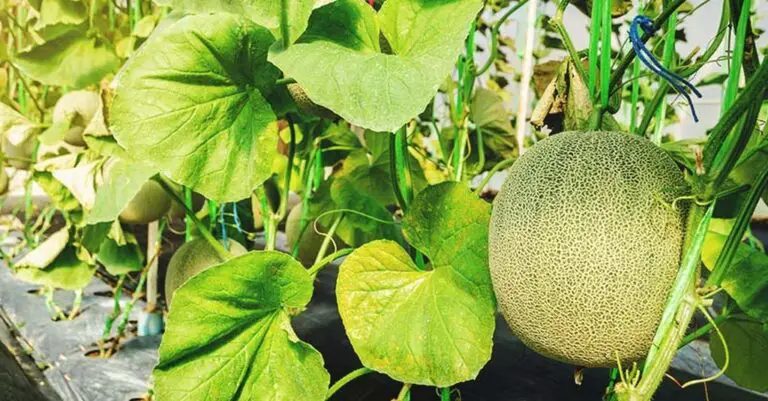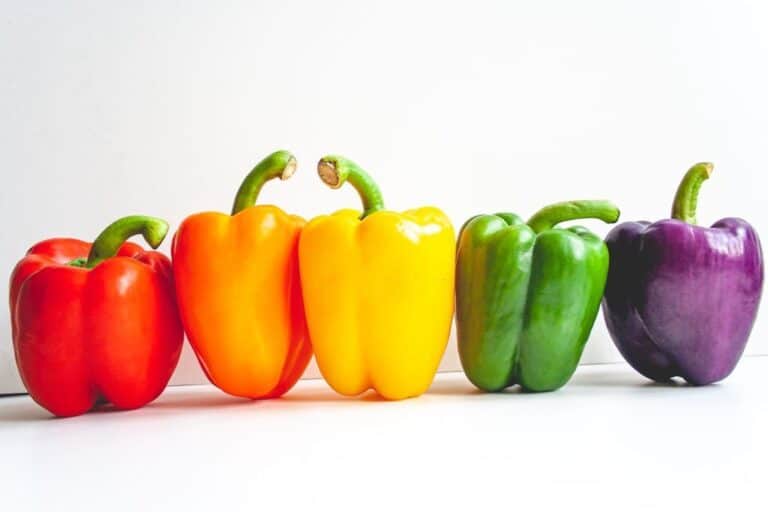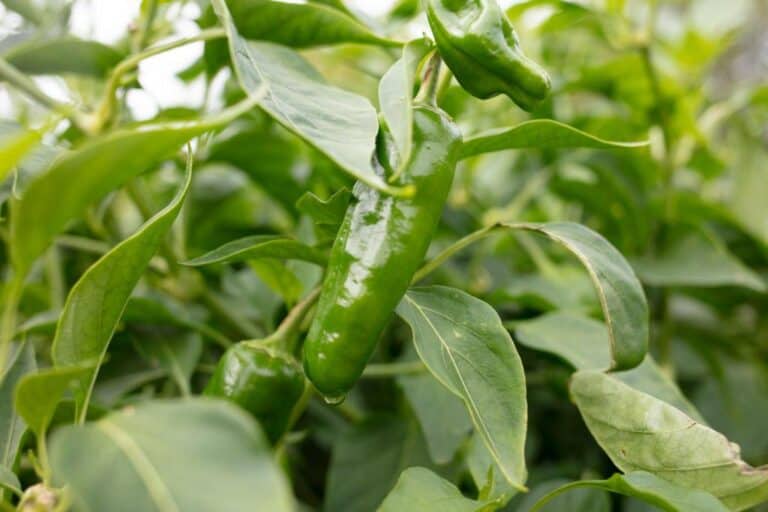Can I Plant Broccoli And Brussels Sprouts Together? Companion Gardening
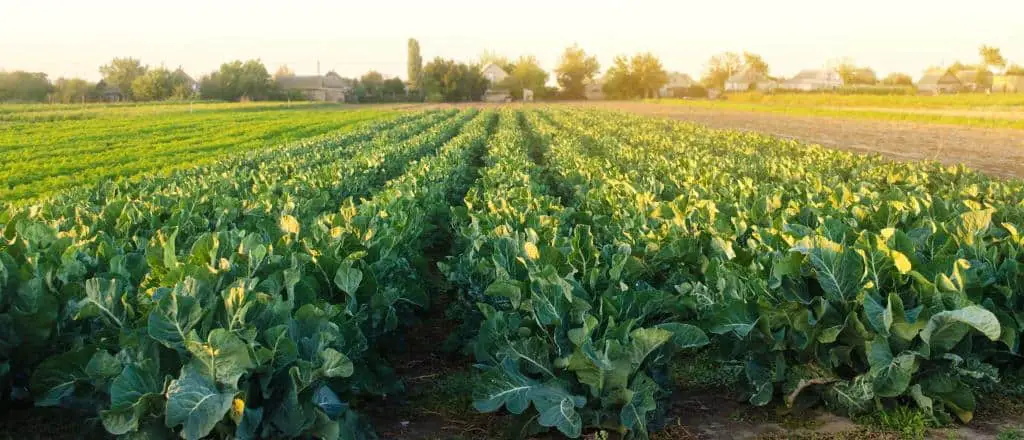
Are you a vegetable enthusiast looking to make the most of your garden space? Or perhaps you’re a green-thumb gardener eager to explore the benefits of companion planting?
If so, you’ve come to the right place! In this article, we’ll delve into the intriguing world of co-cultivating broccoli and Brussels sprouts. These two nutritious powerhouses share a family bond, and their compatibility in the garden opens up a world of possibilities for both novice and seasoned gardeners alike.
But can these two vegetable giants really thrive side by side? Is it possible to create a harmonious garden bed where they coexist and flourish together?
Join us as we unravel the mysteries surrounding planting broccoli and Brussels sprouts together. Discover the advantages, explore their compatibility factors, and gather expert tips to ensure a successful partnership in your garden.
Get ready to unlock the secrets of this dynamic duo and embark on a journey to vegetable gardening greatness!
Benefits of Planting Broccoli and Brussels Sprouts Together
Broccoli and Brussels sprouts are both nutritious and delicious vegetables that belong to the same family, Brassicaceae. They share similar growing requirements and can thrive in similar conditions, making them great companions in the garden.
There are several advantages to planting these plants together, beyond just saving land and money.
1. Complementary Growth Habits and Nutrient Requirements
One of the key advantages of planting broccoli and Brussels sprouts together is that they have similar growth habits and nutrient requirements. Both vegetables belong to the Brassica oleracea species, which means they thrive in similar conditions. This compatibility allows you to optimize the use of your garden space efficiently.
2. Efficient Use of Garden Space
By planting broccoli and Brussels sprouts together, you can make the most of limited garden space. These vegetables have similar growth patterns, with tall stalks and large leaves. When planted in proximity, they can provide mutual support, reducing the need for additional stakes or trellises. This efficient use of space allows you to grow more produce in a smaller area.
3. Pest Management Advantages
Another benefit of growing broccoli and Brussels sprouts together is enhanced pest management. These vegetables are susceptible to similar pests, such as cabbage worms and aphids. When planted together, these pests are less likely to spread rapidly since their population is divided between the two crops. This natural pest management approach can help minimize the need for chemical interventions.
Understanding the Growth Characteristics of Broccoli and Brussels Sprouts
To ensure successful cultivation, it’s crucial to have a good understanding of the growth characteristics of broccoli and Brussels sprouts. Let’s explore their life cycle, planting requirements, optimal growing conditions, and expected harvest times.
Life Cycle and Planting Requirements
Both broccoli and Brussels sprouts are cool-season crops that thrive in moderate temperatures. They have similar life cycles, requiring about 60–80 days to reach maturity. To ensure a continuous harvest, you can stagger the planting of these vegetables, starting with broccoli and following up with Brussels sprouts a few weeks later.
Optimal Growing Conditions
Broccoli and Brussels sprouts prefer well-drained soil with a pH level ranging from 6.0 to 7.0. Adequate sunlight is crucial for the growth of Brussels sprouts and broccoli, so choose a location that receives at least 6 hours of direct sunlight per day. Provide them with sufficient airflow to prevent the onset of fungal diseases.
Expected Harvest Times
The exact harvest times for Brussels sprouts and broccoli depend on various factors, including the specific variety, growing conditions, and climate. However, as a general guideline, broccoli heads are typically ready for harvest when they reach a firm, tight appearance.
Brussels sprouts, on the other hand, are harvested when the sprouts are firm and about 1-2 inches in diameter. It’s essential to monitor the crops closely to ensure a timely harvest.
Compatibility of Broccoli and Brussels Sprouts
Broccoli and Brussels sprouts are compatible not only in terms of growing conditions but also in terms of their growth patterns. They have similar cultural requirements and go through comparable stages of development. This compatibility makes them ideal companions in the garden.
Here are some key factors to consider when planting broccoli and Brussels sprouts together:
1. Light Requirements
Both broccoli and Brussels sprouts thrive in full sun, requiring at least six hours of direct sunlight each day. Ensure that the planting location provides ample light to support the growth and development of both vegetables.
2. Soil Conditions
Broccoli and Brussels sprouts prefer well-draining soil rich in organic matter. The pH level should ideally be between 6.0 and 7.5. Before planting, prepare the soil by adding compost or well-rotted manure to improve its fertility and structure.
3. Temperature
Broccoli and Brussels sprouts are cool-season vegetables that prefer moderate temperatures. They can tolerate light frosts, but prolonged exposure to freezing temperatures can harm their growth. Plant them in the early spring or late summer to avoid extreme heat or cold.
4. Spacing
Proper spacing is crucial for the healthy development of both broccoli and Brussels sprouts. They require adequate air circulation to minimize the risk of disease and allow room for their mature size. Provide each plant with sufficient space according to the recommended guidelines on the seed packet or plant label.
5. Watering
Consistent watering is important for both broccoli and Brussels sprouts. They require regular irrigation, especially during dry spells. Keep the soil evenly moist but not waterlogged to prevent root rot and other moisture-related issues.
6. Pests and Diseases
While broccoli and Brussels sprouts have natural defenses against pests, they may still be susceptible to certain insects and diseases. Monitor your plants regularly and take appropriate measures, such as applying organic pest control methods, to prevent infestations or diseases from spreading.
Tips for Successful Co-Cultivation
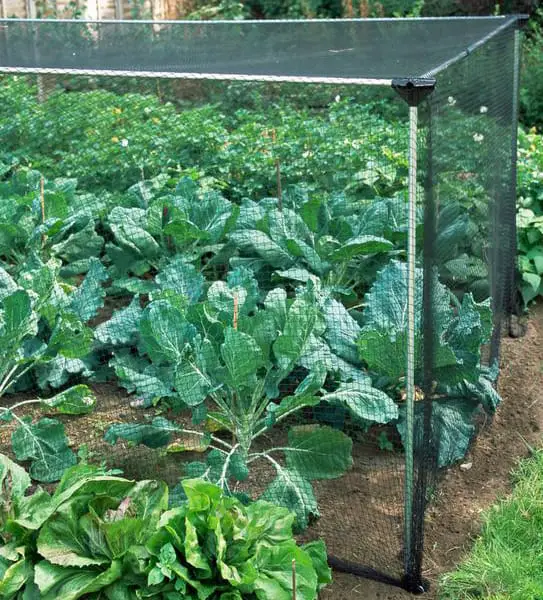
To ensure successful co-cultivation of broccoli and Brussels sprouts, consider the following tips:
- Timing: Plant broccoli and Brussels sprouts at the same time to ensure synchronized growth. Start seeds indoors about 6–8 weeks before the last frost date, or purchase young seedlings from a reputable nursery.
- Transplanting: When transplanting broccoli or brussels sprouts, handle the seedlings with care to avoid damaging the delicate roots. Dig a hole deep enough to accommodate the root ball and gently place the seedling into the hole. Firmly press the soil around the base of the plant to secure it in place.
- Mulching: Apply a layer of organic mulch around the base of the plants to retain moisture, suppress weeds, and maintain a consistent soil temperature. Mulching also helps prevent soil erosion and improves overall soil health.
- Fertilization: Prior to planting, incorporate a balanced organic fertilizer into the soil. Additionally, side-dress the plants with a nitrogen-rich fertilizer once they have established and continue to fertilize throughout the growing season as per the instructions on the fertilizer package.
- Staking: As the plants grow, provide support for their tall stems to prevent them from toppling over. Use stakes or cages to support Brussels Sprouts and Broccoli, especially when they begin to develop large heads of broccoli or Brussels sprouts.
- Harvesting: Harvesting broccoli and Brussels sprouts at the right time is essential to enjoying their optimal taste and texture. For broccoli, cut the central head when it reaches a tight, dark green appearance. Harvest the secondary shoots that develop afterward. For Brussels sprouts, begin harvesting from the bottom of the stalk, starting with the larger sprouts, and work your way up as they mature.
- Succession Planting: To enjoy a continuous harvest, consider succession planting. As you harvest mature plants, replace them with new seedlings or seeds to ensure a steady supply of fresh produce throughout the season.
Read: Do Brussel Sprouts Need a Trellis and Support To Grow?
Managing Pests and Diseases When Planting Both Vegetables Together
When planting broccoli and Brussels sprouts together, be aware of the potential pests and diseases that can affect them. Implementing proactive pest management strategies and identifying common diseases are crucial for maintaining healthy plants.
Common Pests Affecting Broccoli and Brussels Sprouts
Broccoli and Brussels sprouts can fall victim to various pests, including cabbage worms, aphids, flea beetles, and caterpillars. These pests can damage leaves, feed on developing heads, and hinder overall plant growth. Regularly inspect your plants for signs of infestation and promptly take action to control and manage these pests.
Natural Pest Control Methods
To minimize the use of chemical pesticides, consider implementing natural pest control methods. For example, introducing beneficial insects like ladybugs and lacewings can help control aphids and other small pests. Additionally, practicing crop rotation, removing affected plant debris, and using physical barriers such as row covers can help prevent pest infestations.
Identifying and Treating Common Diseases
Broccoli and Brussels sprouts are susceptible to diseases such as clubroot, downy mildew, and powdery mildew. These diseases can cause wilting, yellowing, and other detrimental effects on the plants.
You should regularly inspect plants for signs of disease, such as discolored leaves or powdery growth. If you notice any symptoms, promptly remove and destroy affected plant parts and consider applying organic fungicides if necessary.
Harvesting and Storing Broccoli and Brussels Sprouts
The joy of growing your own vegetables culminates in the harvest. When it comes to broccoli and Brussels sprouts, proper harvesting and storage techniques are essential to preserving their freshness and flavor.
Let’s explore some key considerations for harvesting and storing these delightful vegetables.
Optimal Harvest Time
To enjoy the best flavor and texture, harvest broccoli and Brussels sprouts at the right time.
For broccoli, look for firm, compact heads that are dark green in color. Harvest the main head of the broccoli plant when it reaches a desirable size, typically around 4–7 inches in diameter, before the tiny flower buds start to open.
When it comes to Brussels sprouts, wait until the sprouts are firm and about 1-2 inches in diameter. Start harvesting from the bottom of the stalk, removing the lower sprouts first and allowing the upper ones to continue developing.
Harvesting Techniques to Minimize Damage
When harvesting broccoli and Brussels sprouts, use proper techniques. This is to minimize damage to the plants and ensure the longevity of the remaining crop. Use a sharp knife or pruning shears to cut the heads or sprouts, leaving a short stalk attached.
Avoid twisting or pulling, as this can damage the plants and affect future growth. Handle the harvested vegetables with care to prevent bruising or crushing.
Proper Storage Methods for Extended Freshness
To extend the shelf life and maintain the freshness of your harvested broccoli and Brussels sprouts, store them properly. For short-term storage, refrigerate unwashed heads or sprouts in perforated plastic bags or loosely wrapped in damp paper towels. This helps maintain the desired level of moisture while allowing for airflow.
Consume them within a week for the best quality. Alternatively, you can blanch and freeze broccoli florets or Brussels sprouts for long-term storage.
Companion Planting Options for Broccoli and Brussels Sprouts
Companion planting involves strategically growing plants together to enhance their growth, deter pests, or attract beneficial insects. Let’s explore some companion planting options for broccoli and Brussels sprouts.
Plants That Can Benefit or Deter Pests When Planted Alongside
Planting certain companion plants near broccoli and Brussels sprouts can provide mutual benefits. For example, planting aromatic herbs like thyme, rosemary, or dill can help deter common pests like cabbage worms and aphids.
The strong scents of these herbs can confuse and repel pests, reducing the risk of infestation. Additionally, planting flowering plants such as marigolds or calendula can attract beneficial insects like ladybugs and lacewings, which feed on pests that commonly affect broccoli and Brussels sprouts.
Considerations for Combining Different Vegetables in the Same Bed
When combining different vegetables in the same bed, consider their compatibility in terms of growth habits, nutrient requirements, and potential competition for resources.
While broccoli and Brussels sprouts can be planted together, choose companion plants that have similar needs and won’t overshadow or overcrowd each other. Consider the height, spread, and maturity times of the vegetables to ensure they have enough space and resources to thrive.
Maximizing the Overall Productivity of the Garden
To maximize the productivity of your garden bed when planting broccoli and Brussels sprouts, consider the following tips:
- Plan your garden layout carefully, taking into account the growth habits and space requirements of each vegetable. This will help optimize the use of available space and ensure efficient utilization of resources.
- Incorporate organic matter into soil, such as compost or well-rotted manure, into the soil before planting. This improves soil fertility, structure, and moisture retention, providing a favorable environment for plant growth.
- Implement good garden practices, such as regular weeding, proper mulching, and timely watering, to create optimal growing conditions for your vegetables.
- Monitor your plants regularly for any signs of nutrient deficiencies, pest infestations, or diseases. Early detection and prompt action can help prevent or mitigate potential problems.
- Rotate your crops each season to prevent the buildup of pests and diseases while promoting soil health and nutrient balance.
- Experiment with different varieties of broccoli and Brussels sprouts to diversify flavors, textures, and harvest times, extending the enjoyment of fresh produce throughout the growing season.
By implementing these strategies and maintaining proper care and attention, you can create a thriving garden bed that yields abundant and delicious broccoli and Brussels sprouts, while maximizing the overall productivity of your garden.
Conclusion
Planting broccoli and Brussels sprouts together can be a rewarding and efficient way to maximize your garden’s potential. These compatible vegetables offer numerous benefits, including space efficiency, crop rotation advantages, companion planting advantages, and convenience in maintenance.
By considering their light requirements, soil conditions, temperature preferences, spacing, watering needs, and pest management, you can create an environment conducive to their healthy growth. With proper care, you can enjoy a bountiful harvest of nutritious and delicious broccoli and Brussels sprouts.
So go ahead and give it a try—your taste buds and garden will thank you!
FAQs on Companion Planting Broccoli and Brussels Sprouts
Do broccoli and Brussels sprouts have similar growing conditions?
Absolutely! Broccoli and Brussels sprouts share similar growing conditions. They both prefer full sun, well-draining soil rich in organic matter, and moderate temperatures. Their compatibility in terms of light, soil, and temperature requirements makes them great companions in the garden.
How often should I water broccoli and Brussels sprouts?
Broccoli and Brussels sprouts require regular watering to keep the soil evenly moist. Water deeply once or twice a week, depending on the weather conditions. Aim to provide about 1–1.5 inches of water per week. Adjust watering frequency based on rainfall and the moisture needs of your specific garden environment.
What is the best time to harvest broccoli and Brussels sprouts?
The best time to harvest broccoli is when the central head is tight and dark green. Harvest it before the flowers begin to open. For Brussels sprouts, start harvesting from the bottom of the stalk once the sprouts reach a desirable size. Harvest them before they become loose or yellow. Regular monitoring is key to harvesting at the right time for both vegetables.
Can I save seeds from broccoli and Brussels sprouts for future planting?
Yes, you can save seeds from broccoli and Brussels sprouts for future planting. Allow the plants to flower and go to seed. Once the seed pods dry out and turn brown, carefully collect and store the seeds in a cool, dry place. Remember to label and date the seeds for future reference.
Are there any specific varieties of broccoli and Brussels sprouts that grow well together?
There are no specific varieties of broccoli and Brussels sprouts that must be grown together, as most varieties will thrive alongside each other. Choose varieties that suit your preferences, climate, and available space. Opt for disease-resistant varieties to ensure healthier plants. Experiment with different varieties to find your favorites and enjoy a diverse harvest.

